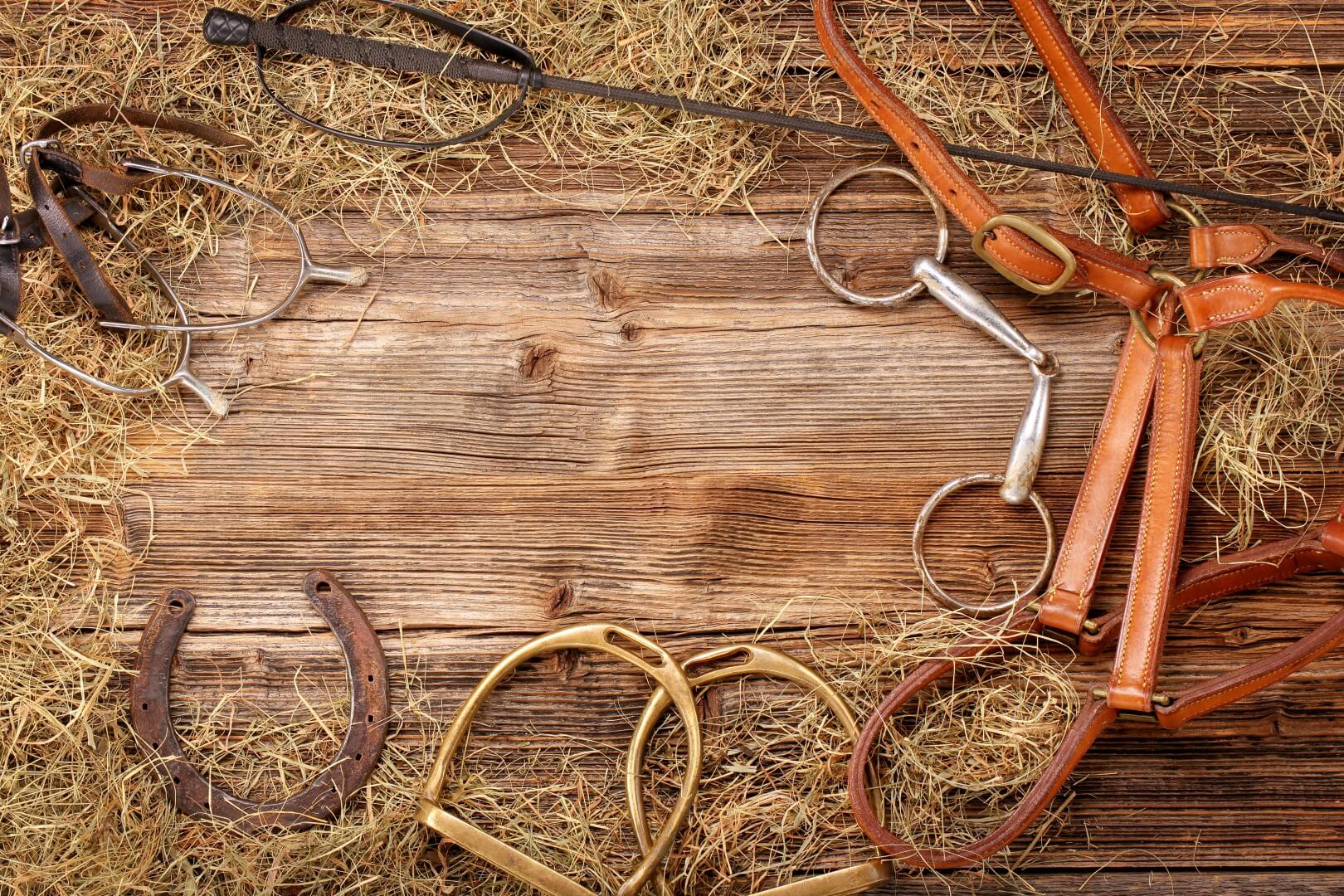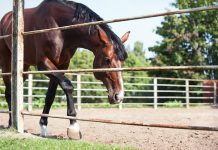
Anyone who has suffered from gastric ulcers knows how unpleasant and potentially debilitating they can be – and the remarkable relief omeprazole gives.
Equine gastric ulcers can be equally painful. Symptoms include attitude changes, poor appetite, weight loss, reduced performance, diarrhoea, abdominal discomfort and even recurrent episodes of colic7,8. They are surprisingly common, especially in performance horses.
Omeprazole is a great choice for quick and effective treatment of gastric ulcers in horses, but ironically, the medication for excessive stomach acidity is destroyed by acid.
Enteric-coated omeprazole: how it works
Omeprazole acts as a proton pump inhibitor, meaning it reduces the amount of acid produced in the stomach, which gives the ulcer a chance to heal by itself.
 The enteric-coating creates a microcapsule around the omeprazole that remains stable in the acidic stomach. Instead it breaks down in the alkaline duodenum and the omeprazole is released and absorbed into the bloodstream – where it works.
The enteric-coating creates a microcapsule around the omeprazole that remains stable in the acidic stomach. Instead it breaks down in the alkaline duodenum and the omeprazole is released and absorbed into the bloodstream – where it works.
Based on clinical signs, non-coated powdered omeprazole is effective when given at 4mg/kg. However, enteric-coated omeprazole, such as Gastrozol® Daily*, is effective at 1mg/kg. It appears that up to 75% of uncoated omeprazole is destroyed by stomach acid before it can help the horse!
Gastrozol® Daily* with enteric-coated omeprazole
Due to the lower dosage required and its proven efficacy, enteric-coated omeprazole is clearly a better option than non-coated omeprazole for treating gastric ulcers in your horse. Gastrolzol® Daily* was one of the first enteric-coated omeprazole medications for treating horses in New Zealand, and has been assessed for efficacy with endoscopic examination9.
Gastrozol® Daily* is available from your veterinarian in convenient packs of five syringes. This provides 15 once-a-day treatments for a 500kg horse.
Three ways to help reduce the risk of gastric ulcers in your horse
- Frequent feeding: horses constantly produce acid in their stomachs, so allowing them access to feed helps to keep acid levels down.
- Increase chewing: saliva neutralises stomach acid, so hay or chewy grass is great.
- Reduce stress and increase access to other horses: who doesn’t feel more relaxed hanging out with friends?
For more information on Gastrozol® Daily* talk to your vet and go to www.virbac.co.nz/gastro
*Oral Paste for Horses. Restricted Veterinary Medicine. Available only under Veterinary Authorisation. ACVM No. A09651.
References
1. Luthersson, N et al. The prevalence and anatomical distribution of equine gastric ulceration syndrome (EGUS) in 201 horses in Denmark. Eq Vet J 2009; 41: 619-624. 2. Niedźwiedź A, Kubiak K, Nicpoń J. Endoscopic findings of the stomach in pleasure horses in Poland. Acta Vet Scand 2013; 55: 1-4. 3. Dionne RM et al. Gastric ulcers in standardbred racehorses: prevalence, lesion description, and risk factors. J Vet Int Med 2003; 17: 218-222. 4. Tamzali Y et al. Prevalence of gastric ulcer syndrome in high‐level endurance horses. Eq Vet J 2011; 43: 141-144. 5. Vatistas NJ et al. Cross‐sectional study of gastric ulcers of the squamous mucosa in Thoroughbred racehorses. Eq Vet J 1999; 31: 34-39. 6. Murray MJ et al. Factors associated with gastric lesions in Thoroughbred racehorses. Eq Vet J 1996; 28: 368-374. 7. Vatistas NJ et al. Epidemiological study of gastric ulceration in the Thoroughbred race horse: 202 horses 1992-1993. Proc Am Assoc Eq Pract 1994: 125-126. 8. Murray MJ. Endoscopic appearance of gastric lesions in foals: 94 cases (1987-1988). J Am Vet Med Assoc 1989; 195: 1135-1141. 9. Birkmann K et al. Efficacy of Omeprazole Powder Paste or Enteric‐Coated Formulation in Healing of Gastric Ulcers in Horses. J Vet Int med 2014; 28: 925-933.










